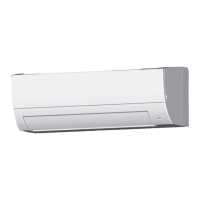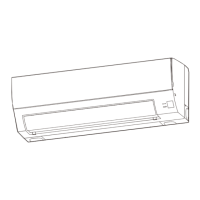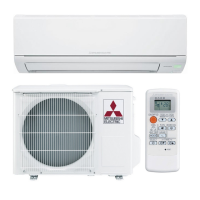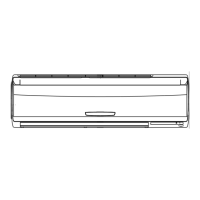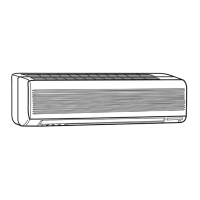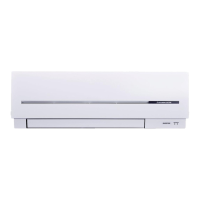
Do you have a question about the Mitsubishi Electric MSZ-BT25VGK and is the answer not in the manual?
| Cooling Capacity | 2.5 kW |
|---|---|
| Heating Capacity | 3.2 kW |
| Power Supply | 220-240 V, 50 Hz |
| Energy Efficiency Class Cooling | A++ |
| Energy Efficiency Class Heating | A+ |
| Refrigerant | R32 |
| Indoor Unit Noise Level | 19 dB |
| Outdoor Unit Noise Level | 50 dB |
Explains hazard symbols, warnings, and cautions for safe operation and usage of the air conditioner.
Details important safety instructions regarding operation, electrical safety, and maintenance to prevent hazards.
Covers essential safety advice for installing the air conditioner, including electrical and placement considerations.
Outlines safety precautions when using the Wi-Fi interface, including potential risks and proper handling.
Provides information on how to dispose of the product, batteries, and accumulators according to regulations.
Identifies and labels the various parts of the indoor air conditioning unit.
Details the components and functions of the remote control for the air conditioner.
Identifies and labels the parts of the outdoor unit of the air conditioner.
Step-by-step guide on how to insert and replace batteries in the remote controller.
Instructions on how to set the current time on the remote controller for accurate operation.
Explains how to pair the remote controller with a specific indoor unit for exclusive control.
Describes the functions of DRY, HEAT, and FAN modes for controlling the air conditioner's operation.
Explains the meaning of different indicator lamp states for the unit's operation status.
Details COOL mode operation and considerations for multi-system setups, including potential mode conflicts.
Guides on how to adjust the vertical airflow direction using the remote controller's VANE button.
Explains how to manually adjust the horizontal airflow direction by moving the vertical vanes.
Details how to select and adjust the fan speed for optimal cooling or quiet operation.
Explains how to save and recall preferred settings for temperature, fan speed, and airflow direction.
Describes how to activate and use the Econo Cool mode for energy-saving cooling with optimized airflow.
Explains how to activate Night Mode to adjust brightness, disable beeps, and reduce outdoor unit noise.
Provides instructions on setting the ON and OFF timers for automated operation start and stop.
Details how to activate emergency cooling or heating using the indoor unit's E.O. SW.
Explains the auto restart feature that resumes operation after a power failure or shutoff.
Instructions for cleaning the air purifying filter every two weeks for optimal performance and air quality.
Guidelines for cleaning or replacing the optional silver-ionized air cleaning filter.
Steps for cleaning the front panel of the indoor unit, including removal and reattachment.
Introduces the Wi-Fi interface and guides on connecting it to the router for MELCloud access.
Explains the function of the MODE switch, RESET switch, and various LED indicators on the interface.
Provides solutions for common problems related to the indoor unit's operation and performance.
Addresses issues with the remote controller, air blowing, and sound anomalies from the unit.
Covers troubleshooting for Wi-Fi connection errors and general system malfunctions requiring dealer consultation.
Instructions on how to prepare the air conditioner for extended periods of non-use to prevent damage.
Steps to follow when resuming operation after a long period of storage, including checks and cleaning.
Advises on suitable and unsuitable locations for installing the air conditioner to ensure proper function and safety.
Details the electrical considerations for installing the air conditioner, including dedicated circuits and breaker capacity.
Provides technical details like model, power, capacity, input, weight, and noise levels for the air conditioner.
Details specifications for multi-connection setups and the guaranteed operating ranges for cooling and heating.
Lists the technical specifications for the Wi-Fi interface module, including voltage, power, and communication protocols.

